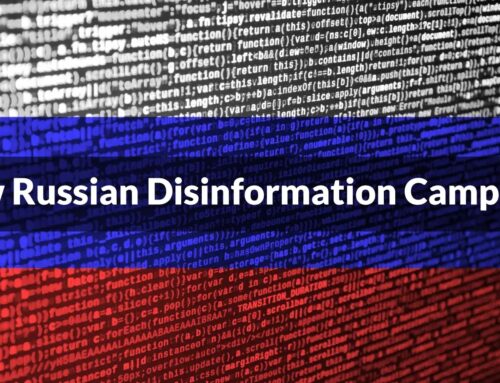
Critical Cisco Vulnerability Let Remote Attackers Execute Arbitrary Code on Firewalls and Routers
A severe security flaw has been identified in core Cisco networking devices, posing a significant risk to organizations globally. This critical vulnerability, which allows remote attackers to execute arbitrary code, impacts a wide range of Cisco’s firewalls and routers. Security professionals and IT administrators must understand the implications of this flaw and prioritize immediate remediation efforts.
Understanding the Critical Cisco Vulnerability (CVE-2025-20363)
Cisco has issued a warning regarding a critical remote code execution (RCE) flaw affecting the web services across multiple Cisco platforms. This vulnerability, tracked as CVE-2025-20363, holds a CVSS 3.1 Base Score of 9.0, indicating a high-severity threat. The score breakdown (AV:N/AC:H/PR:N/UI:N/S:C/C:H/I:H/A:H) highlights several critical aspects:
- Attack Vector: Network (AV:N): An attacker can exploit this vulnerability over a network without requiring local access.
- Attack Complexity: High (AC:H): While the attack complexity is rated high, the potential impact remains severe.
- Privileges Required: None (PR:N): No authentication or special privileges are needed for a successful exploit.
- User Interaction: None (UI:N): The attack does not require any user interaction, making it particularly dangerous.
- Scope: Changed (S:C): A successful exploit can impact resources beyond the directly vulnerable component.
- Confidentiality, Integrity, Availability: High (C:H/I:H/A:H): The vulnerability could lead to complete compromise of confidentiality, integrity, and availability of the affected system.
The flaw originates from an improper validation of user-supplied input within the web services component. This oversight creates an avenue for attackers to inject and execute malicious code, potentially leading to full control over the compromised device.
Affected Cisco Platforms
The scope of this vulnerability is broad, impacting several critical Cisco product lines that organizations rely on for network security and routing. Specifically, the following Cisco Software is affected:
- Cisco ASA (Adaptive Security Appliance) Software
- Cisco FTD (Firepower Threat Defense) Software
- Cisco IOS (Internetwork Operating System) Software
- Cisco IOS XE Software
- Cisco IOS XR Software
Given the widespread deployment of these platforms, the potential attack surface is substantial, making immediate attention to this vulnerability imperative for IT and cybersecurity teams.
Risk Assessment and Potential Impact
A successful exploitation of CVE-2025-20363 could have catastrophic consequences for an organization. Remote code execution on firewalls and routers means an attacker could:
- Gain unauthorized access to internal networks.
- Intercept, modify, or disrupt network traffic.
- Establish persistent backdoors.
- Launch further attacks against internal systems.
- Steal sensitive data or intellectual property.
- Cause widespread network outages.
The impact extends beyond the immediate devices to the integrity and availability of the entire network infrastructure.
Remediation Actions
Addressing this vulnerability requires prompt and decisive action. Organizations should prioritize the following steps:
- Apply Patches Immediately: Cisco is expected to release security updates addressing CVE-2025-20363. Monitor Cisco’s official security advisories and apply available patches as soon as they are released and thoroughly tested in a staging environment.
- Restrict Web Service Access: Limit external access to the web management interfaces of affected Cisco devices. Wherever possible, place these interfaces behind a management VPN or internal network segments accessible only to authorized administrators.
- Implement Strong Segmentation: Ensure network segmentation is robust. This can help limit the lateral movement of an attacker even if a device is compromised.
- Monitor for Suspicious Activity: Enhance monitoring of network traffic and device logs for any unusual activity, such as unexplained reboots, configuration changes, or abnormal data flows.
- Review Firewall Rules: Regularly audit and strengthen firewall rules to minimize the attack surface.
- Regular Backups: Maintain regular and secure backups of device configurations to facilitate quick recovery in case of compromise.
Tools for Detection and Mitigation
Leveraging appropriate tools is crucial for identifying vulnerable systems and enhancing overall security posture. While direct exploit tools for CVE-2025-20363 may not be publicly available yet, these tools can assist in detection, scanning, and mitigation:
| Tool Name | Purpose | Link |
|---|---|---|
| Nessus | Vulnerability scanning for identifying unpatched systems and configurations. | https://www.tenable.com/products/nessus |
| OpenVAS | Open-source vulnerability scanner, useful for identifying known vulnerabilities. | https://www.greenbone.net/en/community-edition/ |
| Snort/Suricata | Network Intrusion Detection/Prevention Systems (NIDS/NIPS) for monitoring suspicious traffic. | https://www.snort.org/ / https://suricata.io/ |
| Cisco Security Advisories | Official source for vulnerability information, patches, and mitigation guidance from Cisco. | https://tools.cisco.com/security/center/publicationListing.x |
| Network Access Control (NAC) Solutions | Enforcing device compliance and limiting unauthorized access to networks. | Vendors include Cisco Identity Services Engine (ISE), Forescout, etc. |
Protecting Your Network Perimeter
The discovery of CVE-2025-20363 underscores the constant need for vigilance in cybersecurity. Critical vulnerabilities in network infrastructure components like firewalls and routers are prime targets for malicious actors. Proactive patching, stringent access controls, continuous monitoring, and a robust incident response plan are essential to safeguarding against such threats. Organizations must act swiftly to assess their exposure and implement the necessary remediation strategies to protect their digital assets.





